While Google Chrome has a built-in dark mode, it only works on websites that support dark mode. Unfortunately, there are many sites that don't, including Google's own Calendar website. For such websites, you can force enable dark mode from the Chrome flags page which lists all experimental features, causing them to switch to dark mode.
This brute-force method can be quite handy, but since it is not an official method, it may not always look good on all websites. Another thing to keep in mind is that even if you force enable dark mode on all websites, Google Chrome will not switch to dark mode until you enable it on your system. Another option is to use an extension for the purpose.
Option 1: Enabling the Auto Dark Mode experimental feature
- Open Chrome, type
chrome://flagsin the address bar and press Enter.
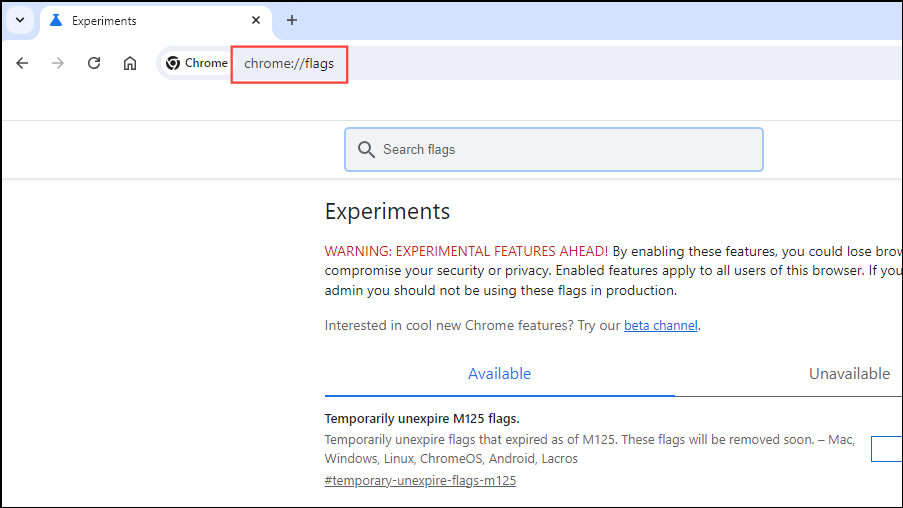
- In the search box on the flags page, type
dark modeto look for the experimental feature.
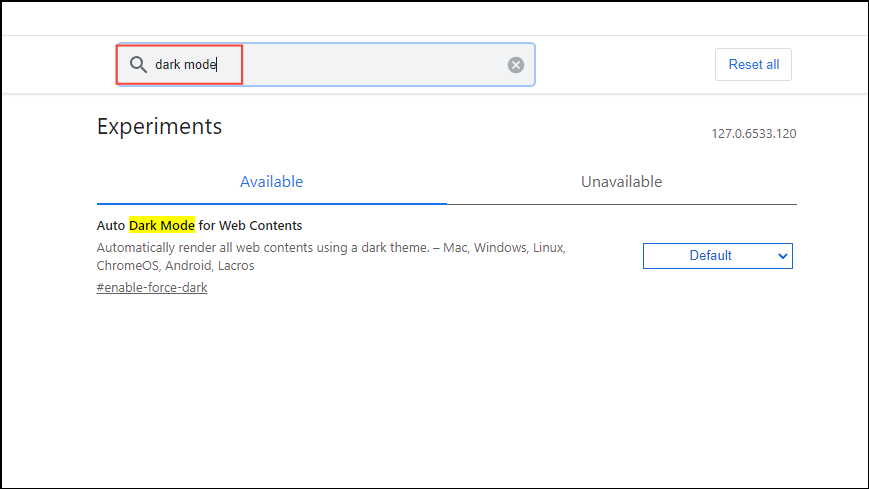
- When the dark mode option appears, click on the button on the right and select 'Enabled' from the dropdown list.
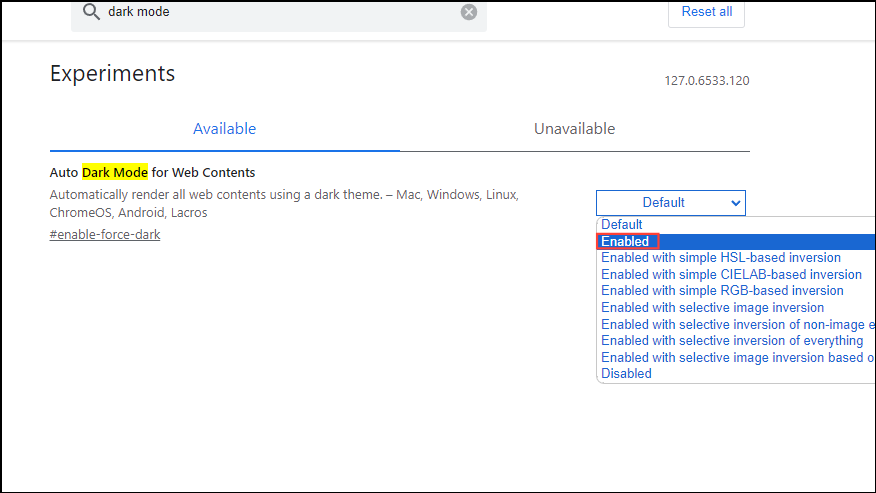
- Once you've enabled the feature, click on the 'Relaunch' button on the bottom right. This will cause the browser to close and open again, so save your open web pages.

- Once Chrome relaunches, visit a website that does not support dark mode officially to check whether the feature is working. Keep in mind that this can affect readability on websites that do not officially have a dark mode. You can try out other dark mode options or turn off the feature at any time by visiting the
chrome://flagspage.

Option 2: Using the Dark Reader Chrome extension
There are a few extensions that let you enable dark mode on all websites, and Dark Reader is one of the best ones.
- Visit the Chrome Web Store and install the Dark Reader extension by clicking on the 'Add to Chrome' button.
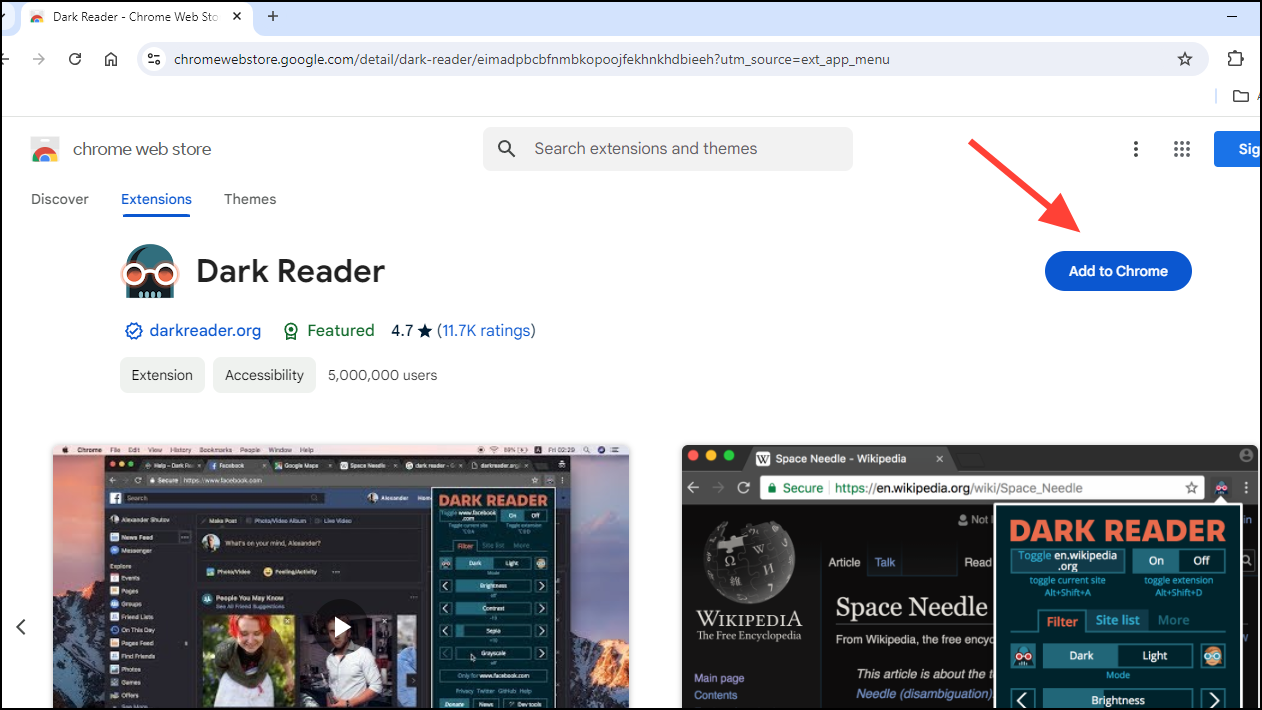
- Once the extension is installed, click on the Extensions button next to the address bar and then on the Dark Reader extension.
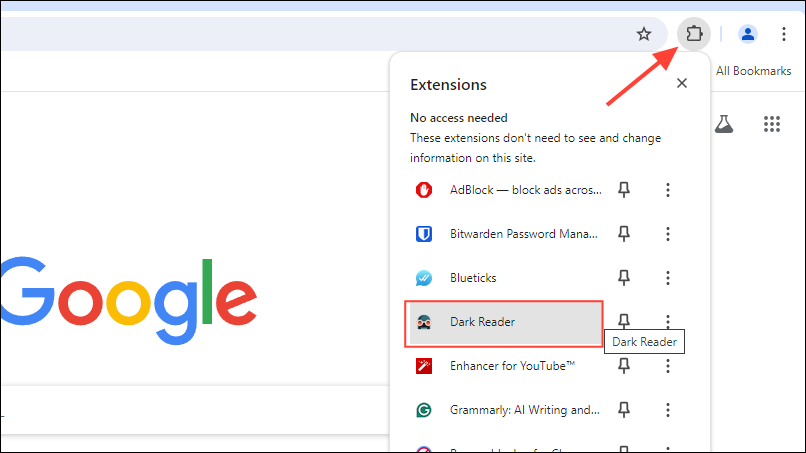
- When the Dark Reader extension appears, check that the Dark Mode option is enabled. If it is not, click on it to turn it on.
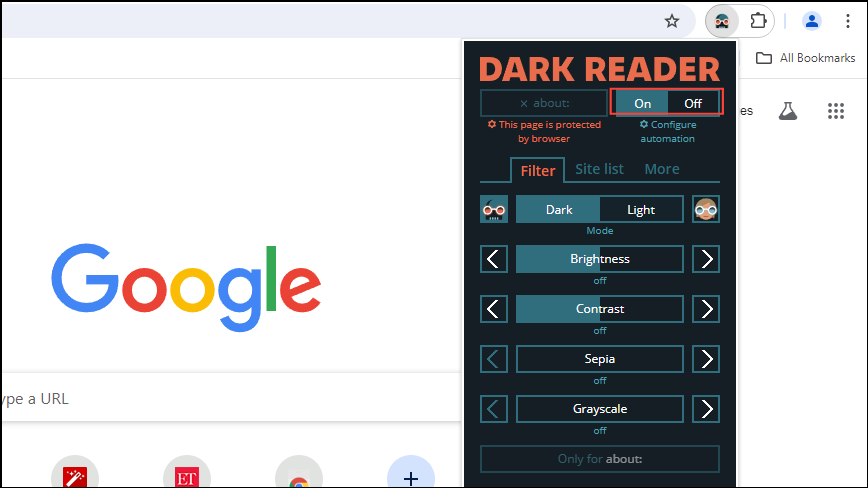
- You can also adjust other dark mode settings in the extension, such as the brightness and contrast, and even turn on grayscale and sepia. You can even turn on these settings for specific sites using the 'Site list' option.
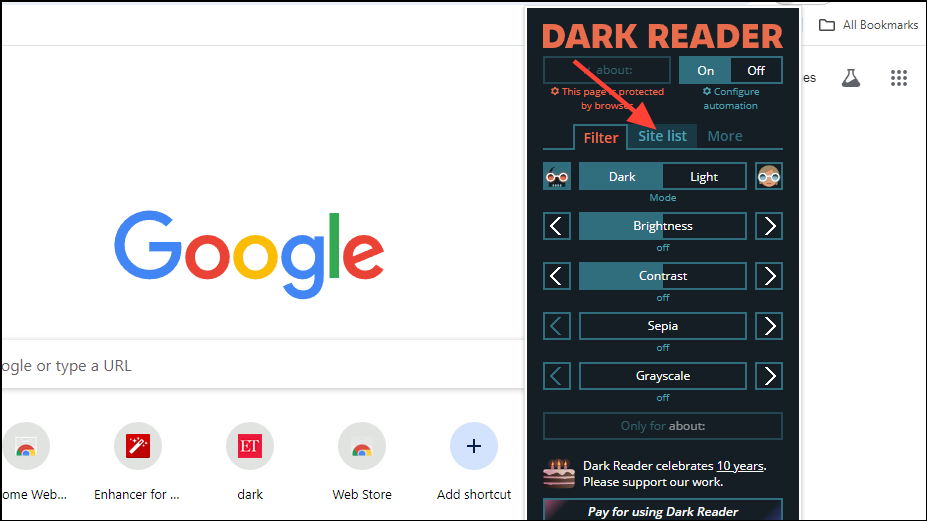
- The extension will enable dark mode for all websites by default. If you want it to apply to certain websites only, you can use the 'Invert listed only' option.

- You can also try out other customizations, such as changing the font on a website by clicking on the 'More' option.
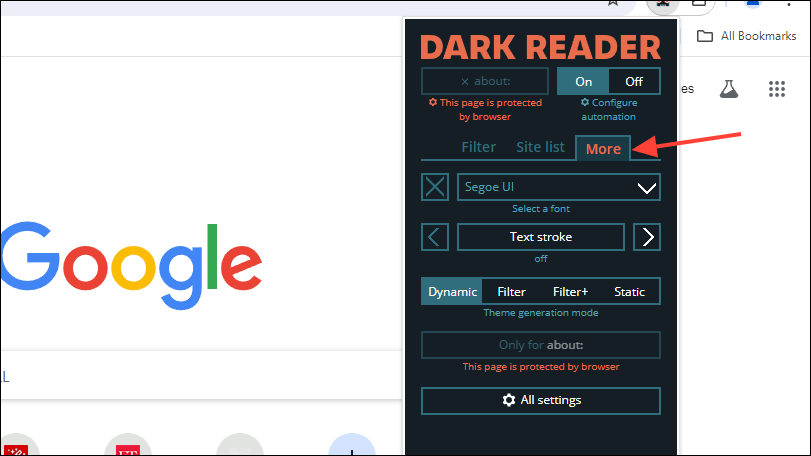
Option 3: With the Super Dark Mode extension
The Super Dark Mode extension not only lets you enable dark mode on websites that do not support it officially but even lets you schedule it for specific time intervals.
- Search for the Super Dark Mode extension in the Chrome Web Store and click on the 'Add to Chrome' button to install it.
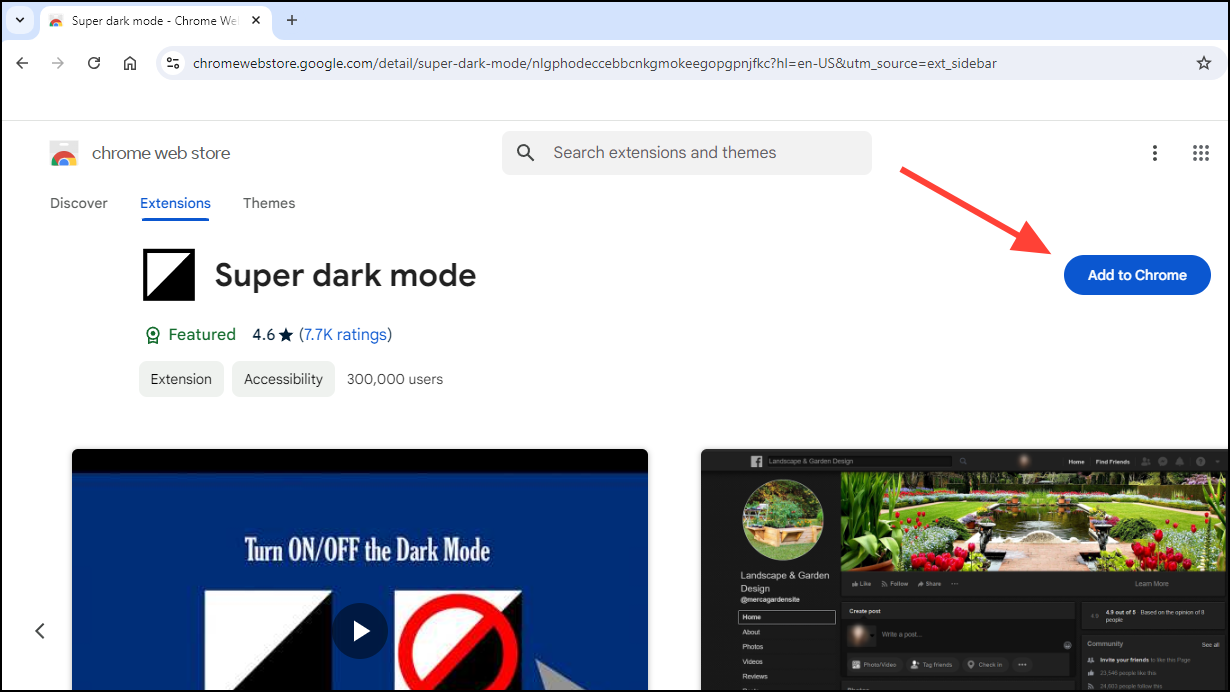
- Once it is installed, click on the Extension button and then on the 'Super Dark Mode' extension to turn it on and off.

- To configure various settings of the extension, click on the three dots next to the extension and then on 'Options'.

- This will open a new page where you can see all the customizable options such as different themes, whitelist options, and auto schedule. For instance, you can try out the 'Invert' option that makes text clearer when dark mode is enabled.
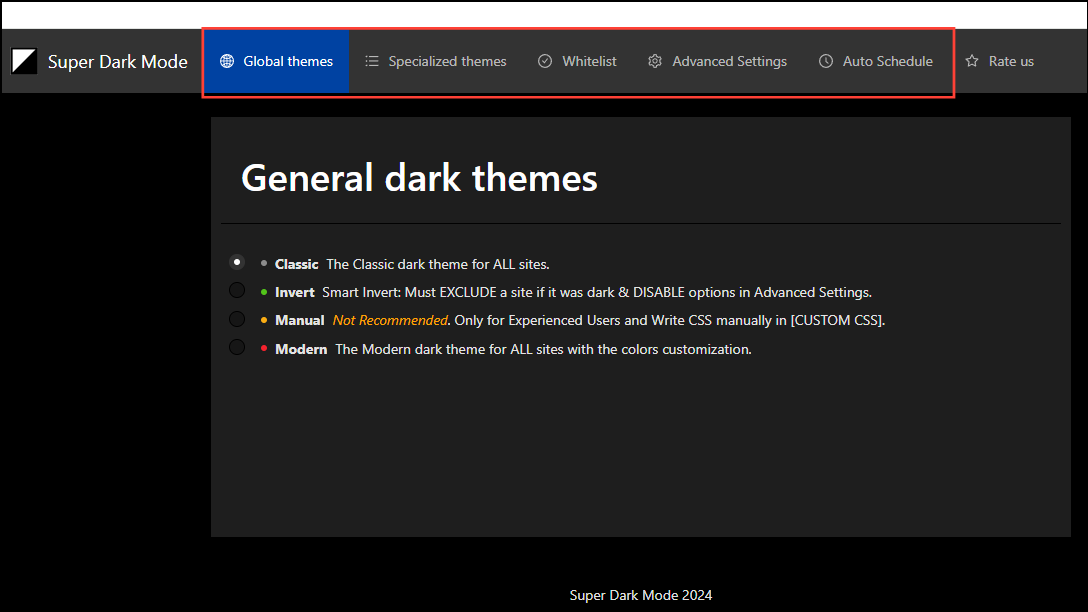
- To schedule dark mode, click on the 'Auto Schedule' tab and then on the checkbox to turn it on. Then you can select the time when dark mode should turn on.
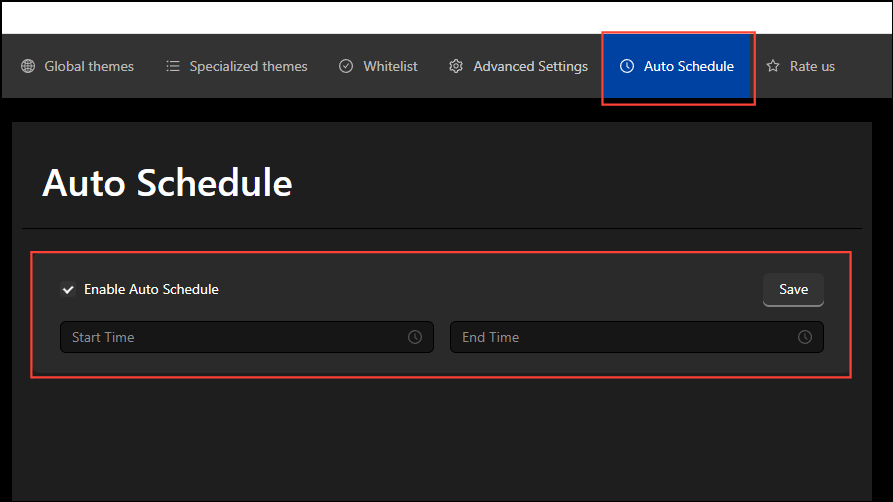
- You can also add certain websites as exceptions by clicking on the 'Whitelist' tab at the top and then entering the URLs in the available box.
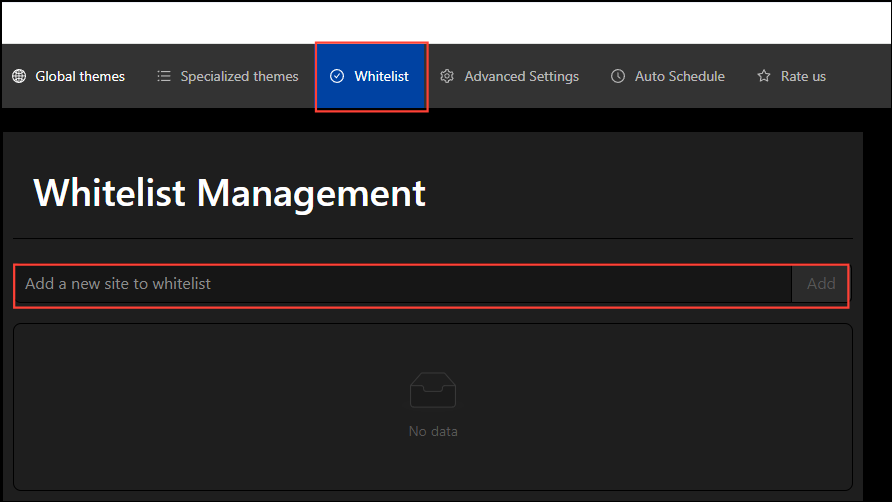
Things to know
- The methods mentioned here work on all desktop platforms, including Windows, Linux, and macOS since they rely on the browser and third-party extensions only.
- Chrome's Auto Dark Mode feature is an experimental feature, which means it may not provide the best experience on all websites.
- Similarly, since certain websites do not support dark mode officially, using extensions can break some of them and adversely affect the user experience. To avoid that, you can use the customization features that extensions offer to ensure websites remain readable and functional.


